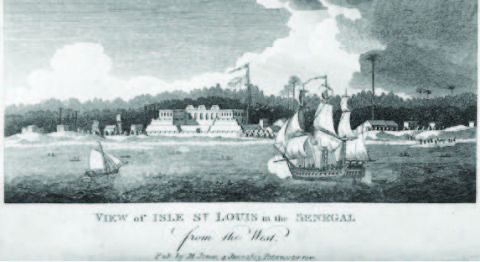Captain Charles O’Hara
1740-1802
Captain Charles O’Hara was born in Lisbon, Portugal in 1740; however, he was of Irish descent. Besides his service in the British military, he was also politically involved, made evident through his role as governor of Senegambia, the short-lived British colony in West Africa. Although against his orders, he was involved in the slave trade and was part of a Moorish raid that enslaved an estimated 8,000 people in Waalo in 1775. He was also an army officer in the American war of independence, rising to the rank of general.
O’Hara was appointed the royal governor for newly founded Province of Senegambia in November 1765. As governor, he was manipulative and aimed to make the African population dependent on British goods. For him, trade was not supposed to be mutually beneficial, and he instead found ways to promote British influence over the local people.. O’Hara was supposed to encourage immigration of European settlers to Senegambia and start plantations of indigo, tobacco, rice and cotton. However, his efforts were unsuccessful and in 1775, he shifted his focus to involvement in the slave trade.
In 1768 when Fort James in the Gambia River was attacked, O’Hara realised 400 to 500 soldiers were needed to defend the colony. This was not possible due to the casualties suffered after the Seven Years’ War ended in 1763. His superiors suggested recruiting Africans into the British military, but O’Hara rejected this plan fearing Africans would refuse to be subordinate when fighting beside British troops.Instead he relied on convicts recruited from the prisons of Britain. These convicts were disliked because of their bad character, and enslaved soldiers were conscripted. Even O’Hara purchased enslaved men as soldiers.
O’Hara was governor for ten years but was recalled 1776 by the Board of Trade after accusations that he was engaged in the slave trade. O’Hara was dismissed in June 1776.
The encounter between Captain O’Hara and Vassa, described in The Interesting Narrative, happened in London. Vassa was a free man at the time of this encounter and was seeking work as a hairdresser. For this, the Guerin sisters directed Vassa to O’Hara to find a hairdresser who would teach Vassa the craft. The Captain was kind to Vassa and helped him with this. This mention of O’Hara also suggests that Vassa previously knew him.
Vassa on Captain Charles O’Hara in The Interesting Narrative 9th ed.
“They answered me very politely, that they were sorry it did not suit them to take me as their servant, and asked me what business I should like to learn? I said, hair-dressing. They then promised to assist me in this; and soon after, they recommended me to a gentleman, whom I had known before, one Capt. O’Hara, who treated me with much kindness, and procured me a master, a hair-dresser, in Coventry-court, Haymarket, with whom he placed me. I was with this man from September till the February following. In that time, we had a neighbour in the same court, who taught the French-horn. He used to blow it so well that I was charmed with it and agreed with him to teach me to blow it. Accordingly, he took me in hand, and began to instruct me, and I soon learned all the three parts.” (Pg. 165-166)
Prepared by Lisa Raposo, 15 July 2021
RELATED FILES AND IMAGES
REFERENCES
Dziennik, Matthew P. “‘Till These Experiments Be Made’: Senegambia and British Imperial Policy in the Eighteenth Century.” The English Historical Review 130, no. 546 (2015): 1132–61.
Mullan, Anthony. “A Web of Imperial Connections: Surveyors and Planters in Eighteenth-Century Dominica.” Terrae Incognitae 48:2 (2016), 183-205. https://doi.org/10.1080/00822884.2016.1211356.
“The British Surrendering Their Arms to Gen. Washington, 1781 - National Portrait Gallery.” Accessed July 15, 2021. https://www.npg.org.uk/collections/search/portrait/mw90944/The-British-Surrendering-their-Arms-to-Gen-Washington-1781.
Vassa, Gustavus. The Interesting Narrative and Other Writings, edited with an introduction and notes by Vincent Carretta, reprint of 9th edition (London and New York: Penguin, 2003).
This webpage was last updated on 2021-10-08 by Kartikay Chadha
